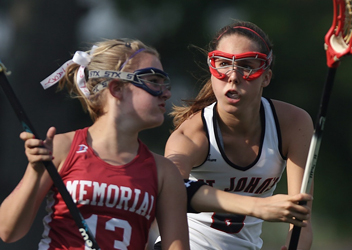Research In Action
Research In Action
Breadcrumb

I’ve been doing adolescent driving research for over a decade, studying crash scenarios, driver inattention, and interventions that can reduce crash risk. My goal has always been to help keep young drivers and those who share the road with them safe.
Prior to my move into research and academia, I was a school nurse and part of a team that would support students in return-to-learn and return-to-play guidelines after injuries such as concussion. Since my days on a high school campus, new research has led to improved guidelines for students.
However, there have never been evidence-based guidelines on return-to-driving after concussion. For adolescents, this is particularly concerning given the rapid skill development that happens during the early phases of driving and their already heightened crash risk as new young drivers.
In recent years, I have had a unique opportunity to collaborate with my Minds Matter Concussion team colleagues Dr. Kristy Arbogast and Dr. Christina Master on concussion in adolescents. This opportunity has built a bridge to new work in adolescent driving research.
Examining Data from the CHOP Minds Matter Concussion Registry
Due to the lack of research in this area, we first looked at data from the Minds Matter Concussion Registry here at CHOP to characterize adolescent driving behaviors after concussion and to examine clinical differences among adolescents with different driving practices post injury.
We looked at data of 332 adolescent drivers, ages 16-19, diagnosed with a concussion ≤28 days of injury and seen at the Minds Matter Concussion program. Our results were recently published in the Journal of Adolescent Health.
We found that, prior to seeing the clinician in specialty care, nearly half of the adolescents had already returned to driving since injury. Of those who had returned to driving, three out of five reported no changes in their driving behavior. The others made changes that reduced exposure to driving, such as limiting the number of trips, limiting the distance of trips, and avoiding driving at night.
Among those who had returned to driving, about 79% had returned to school, but only 28% had returned to exercise and 11% had returned to playing an organized sport. Many of those who had returned to school were returning with modifications to manage their symptoms.
It seems that families, who are making school and sports accommodations for their teen’s injury, may not be considering driving in a similar light, as a cognitively demanding and high-risk activity. When we think about return-to-school recommendations, they typically include a gradual increase in school-related cognitive activities without severely exacerbating symptoms.
It may be that a gradual increase in the cognitive activities related to driving could also be justified. However, there is a lack of research about driving after concussion in adolescents to confirm this.
Our current study using the Minds Matter Concussion Registry provides important direction in this area of research. Our team is excited about next steps where we will further examine driving after concussion in adolescents. We will use driving simulation, on-road data collection and ecologic momentary assessment (EMA) as innovative ways to help determine the safe return-to-drive experience in adolescents after concussion.
In the coming years, I look forward to sharing what we learn with our peers in adolescent concussion research and clinical care— hopefully contributing to the evidence-base for future clinical practice guidelines.




